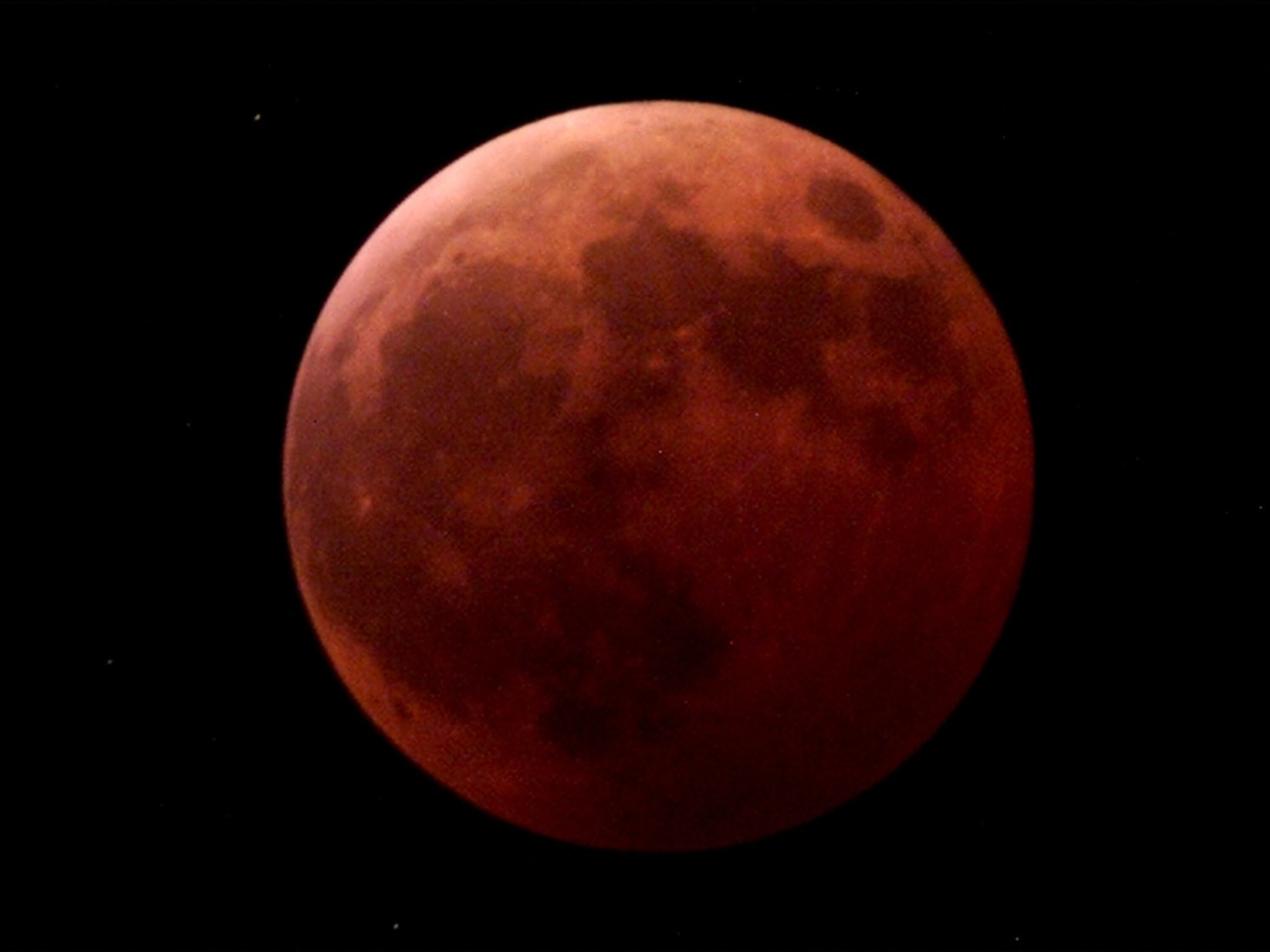
Winter Solstice + Lunar Eclipse—First in 372 Years
When, where, and how to see the total lunar eclipse tonight.
In 2010, for the first time since 1638, a total lunar eclipse of a full moon falls on the winter solstice—a stargazing event almost anyone in North America will be able to see before dawn Tuesday, weather permitting.
Occurring at 6:38 p.m. ET Tuesday, the 2010 winter solstice marks the official beginning of winter in the Northern Hemisphere. The shortest day of the year boasts the year's longest shadows and fewest daylight hours.
It's all due to the Northern Hemisphere being tilted farther from the sun than at any other point during the year. As a result, the sun follows its lowest arc of the year across the sky. (Get more winter solstice facts.)
In the early morning hours of the winter solstice day, many sky-watchers will see the first shadings of a total lunar eclipse.
The entire lunar eclipse will be best seen from North America and western South America. In most of Europe and Africa, the moon will dip below the horizon in mid-eclipse.
Unlike, say, last week's Geminid meteor shower (pictures), a lunar eclipse represents "one of the few times that an astronomical event is easily visible from even the heavily light polluted cities," said Raminder Singh Samra, resident astronomer at the H.R. MacMillan Space Centre in Vancouver, Canada.
"Lunar eclipses are special, in a way, as the observer that is always in the city or too busy to get away can see this from his or her own backyard."
That assumes, of course, that you're in the right place at the right time.
Clouds, for example, can spoil any sky-watcher's night. And the lunar eclipse will be completely invisible to observers in southern and eastern Africa, the Middle East, or southern Asia.
Lunar Eclipse 101
A lunar eclipse occurs when the moon, Earth, and the sun all line up, with Earth in the middle.
During the eclipse, Earth's shadow is cast onto the full moon, dimming—but not completely obscuring—its surface. Unlike solar eclipses, the lunar varieties are safe to view without any special eyewear.
Lunar eclipses occur twice a year. The previous one fell on June 26, 2010. (See "Lunar Eclipse Saturday to Appear Red?") But the June event was only a partial lunar eclipse.
The winter solstice lunar eclipse will be the first total eclipse of the moon in nearly three years, the last one being on February 20, 2008, according to Singh.
(See solstice pictures: fire rites, druids, and more.)
How to See the 2010 Winter Solstice Lunar Eclipse
Around 1 a.m. ET Tuesday, you may notice a ghostly shading of the moon, marking the arrival of Earth's faint outer shadow, or penumbra.
Shortly after 1:33 a.m. ET, begin looking for the first signs of a dim "bite"—Earth's shadow—advancing across the moon from the left.
The total eclipse, or totality—when the entire moon is dimmed by Earth's shadow—begins at 2:41 a.m. ET and will last a little over 70 minutes.
Around 3:17 a.m. ET, as the moon plunges into Earth's umbra—the dark center of our planet's shadow—the moon will slowly begin glowing orange.
The last hint of Earth's shadow will slip away around 5:01 a.m. ET.
The next total lunar eclipse will occur on June 15, 2011, and will be best seen from southern Asia and eastern Africa. North Americans will have to wait until April 14, 2014.
(Related: "Solstice a Cause for Celebration Since Ancient Times.")
Why the Moon Turns Reddish During a Lunar Eclipse
Earth's thick, dust-filled atmosphere filters the sunlight shining through it, resulting in the rusty hue of a total lunar eclipse—the same reason the sun looks reddish during sunrises and sunsets.
"If you were on the moon during totality, you would look back at the Earth and see a ring of red light around the perimeter—the red light of all the sunsets and sunrises going on at Earth at that moment," astronomer Benjamin Burress said.
The reason Earth's shadow doesn't make the moon completely dark, even during totality, is that "Earth's atmosphere bends and filters the sunlight to shine a red light on the moon," said Burress, of Chabot Space & Science Center in Oakland, California.
The moon's color during a lunar eclipse can vary from dark gray to blazing orange, according to the amount of dust in Earth's atmosphere at the time.
"A volcanic eruption can put more dust into the atmosphere and increase the effect," Burress said. "Air pollution can do the same."
Since there hasn't been such an eruption recently, astronomers are forecasting a bright orange color for the 2010 winter solstice eclipse.
(Also see "Ancient Irish Tomb Big Draw at Winter Solstice.")
Lunar Eclipses: Omens in the Sky?
While there are no known historical records of solstice eclipses, lunar eclipses in general have long been sources of mystery and spectacle—and not necessarily in a good way.
Ancient documents from Asia, Europe, and the Middle East are full of references connecting eclipses with subsequent dark events, such as a famine or the death of a monarch. (Take a moon myths and mysteries quiz.)
In many traditional cultures, a total lunar eclipse occurs not when the moon enters Earth's shadow but when a mythological creature swallows the satellite, according to ancient-astronomy scholar Ed Krupp.
"For the Chinese, it was the heavenly dog, and across central Asia and Europe, it was a dragon," said Krupp, director of the Griffith Observatory in Los Angeles. "The Maya sometimes depicted the eclipse creature as a serpent, while in the Andes, it was often a puma."
In Iraq lunar eclipses are associated with a popular children's story of a moon that is eaten by a whale.
"For most people, most of the time, most eclipses were trouble," Krupp added. "They were regarded as disruptions of the world order, and that made them dangerous."








